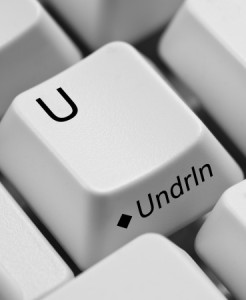 In a continuation of last week’s article Should We Use Italics or Underline?, we will talk about titles of literary or artistic works.
In a continuation of last week’s article Should We Use Italics or Underline?, we will talk about titles of literary or artistic works.
- Do underline or italicize complete works (books, newsletters, magazines, newspapers, movie titles, etc.).
- The latest issue of @Law magazine just arrived in my mailbox. OR
- The latest issue of @Law magazine just arrived in my mailbox.
- As an alternative, complete works may be in all caps; however, if the complete works are being prepared for publication, they must be underlined or italicized to show the publisher that it must appear in italics in the final version.
- Do not underline or italicize the word “magazine” unless it is part of the title of the magazine.
- Do italicize or underline when referring to the name of a publication that is the same as the name of the company, but do not underline or italicize when making reference to the company and not the publication.
- Fortune included a list of the Fortune 100 this month.
- Do not italicize or underline the name of a publication when it is an organizational name.
- The Arizona Attorney Editorial Board is responsible for the content of the Arizona Attorney magazine.
- Do italicize or underline titles of books, newspapers, and magazines that are published in electronic form.
- Do not italicize or underline titles of video games or other games.
- Do not italicize or underline titles of computer software.
- General guidelines:
- With a unit of two or more words that you want to emphasize, underline or italicize that unit:
- She definitely thought the grass was always greener when she left her job last month.
- Traditionally, the punctuation after an italicized word was also italicized. Now, however, the new guideline is to treat the punctuation the same as the main part of the text, not the same as the italicized word right in front of it.
- Her favorite magazine was Motor Trend; however, she could be spotted from time to time reading Cosmopolitan.
- However, if the punctuation is part of the italicized element, it will remain italicized.
- Who’s Afraid of Virginia Woolf? plays at the amphitheater next Saturday.
- When underlining, do not underline the punctuation unless it is part of the underlined element.
- When using run-in headings, do not italicize or underline the punctuation that follows the heading.
- When you have an italicized or underlined element or word being emphasized with a possessive or plural ending added, do not italicize or underline the ending.
- the Encyclopedia Brittanica‘s index
- there were too many whereases in the brief
- The new guidelines are that parentheses either before or after an italicized or underlined element are not italicized or underlined, they are treated in the same way as the main text.
- With a unit of two or more words that you want to emphasize, underline or italicize that unit:
This reminds me of underlining or italics with case citations. When using et seq. or et al., since the period is part of the word, it is italicized or underlined. Any punctuation following that period (as in the second example) is not italicized or underlined.
That’s a lot about italics and underlining. Is there something you have a question about? Add a comment and we can learn together in another post on Proof That proofreading blog.


 Follow
Follow